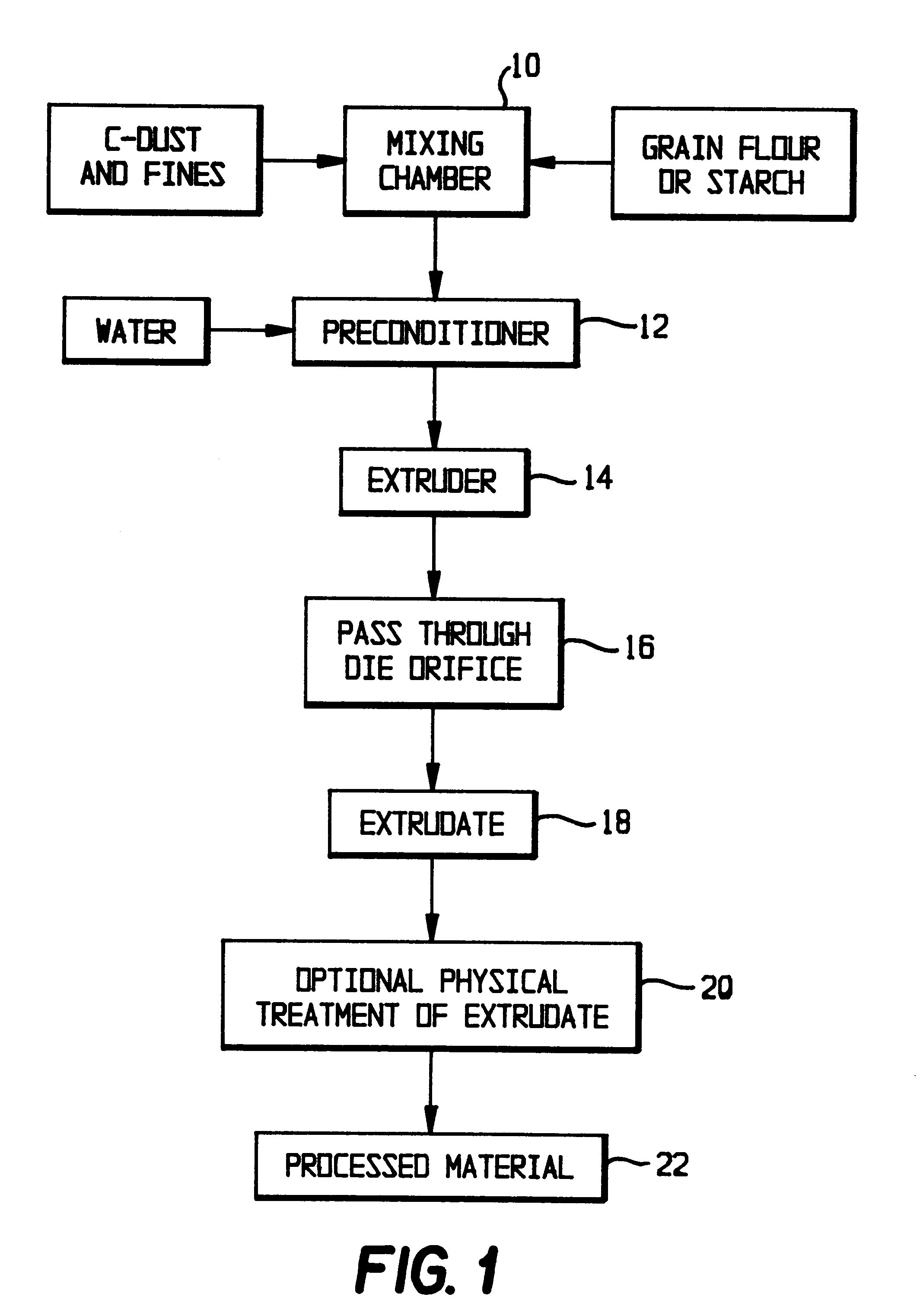Low-density tobacco filler and a method of making low-density tobacco filler and smoking articles therefrom
a low-density, tobacco filler technology, applied in the direction of tobacco, bakery products, applications, etc., can solve the problems of such small size waste of considerable amount of tobacco material in the form of dust and fines, and useless as cut fillers
- Summary
- Abstract
- Description
- Claims
- Application Information
AI Technical Summary
Benefits of technology
Problems solved by technology
Method used
Image
Examples
example 2
Extrusion of a 20% tobacco 80% rice flour mixture was accomplished as follows with the procedure being generally the same as in Example 1. The following table describes three different extrusion runs using the aforesaid 20% tobacco 80% rice flour mixture.
example 3
Extrusion of a 30% tobacco 70% rice flour mixture was accomplished as follows, with the procedure being generally the same as in Example 1. The following table describes an extrusion run using the aforesaid 70% flour, 30% tobacco composition.
example 4
Extrusion of a 40% tobacco 60% rice flour mixture was accomplished as follows with the procedure being generally the same as in Example 1. The following table describes two different extrusion runs using the aforesaid 40% tobacco 60% rice flour mixture.
PUM
 Login to View More
Login to View More Abstract
Description
Claims
Application Information
 Login to View More
Login to View More - R&D
- Intellectual Property
- Life Sciences
- Materials
- Tech Scout
- Unparalleled Data Quality
- Higher Quality Content
- 60% Fewer Hallucinations
Browse by: Latest US Patents, China's latest patents, Technical Efficacy Thesaurus, Application Domain, Technology Topic, Popular Technical Reports.
© 2025 PatSnap. All rights reserved.Legal|Privacy policy|Modern Slavery Act Transparency Statement|Sitemap|About US| Contact US: help@patsnap.com


